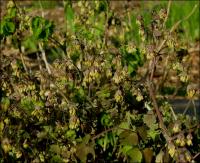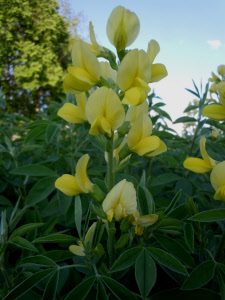Archives
Showing 177–184 of 199 results
-
Syringa vulgaris Lilac, French lilac Z 4-8 SHRUB/SMALL TREE
Single or double, very fragrant lilac panicles in late spring
ARCHIVED
Note: This is a plant not currently for sale. This is an archive page preserved for informational use.
Single or double, very fragrant lilac panicles in late spring
Size: 20’ x 15’
Care: full sun in well-drained soil
Native: SE Europe, Caucasus to AfghanistanIntroduced to European from its native Turkey by Viennese ambassador De Busbecq (1522-1592). Grown in Jefferson’s garden at Monticello and Washington’s Mount Vernon. By 1850 “found in almost every (American) garden.” Breck (1851) ‘Alba’ listed in Tradescant the Elder’s 1634 list as “Lilac Matthioli.” Elias Ashmole’s manuscript, “trees found in Mrs. Tradescants ground when it came into my possession (1662) as ‘Syringa alba.’ ” Pressed specimen in Emily Dickinson’s herbarium.
-
Tanacetum armenum syn. Leucanthemum armenum Snow daisy
Dwarf subshrub covered with mound of silvery foliage and little white daisies in June to July
ARCHIVED
Note: This is a plant not currently for sale. This is an archive page preserved for informational use.
Dwarf subshrub covered with mound of silvery foliage and little white daisies in June to July
Size: 5-6” x 8-10”
Care: sun in well-drained soil
Native: TurkeyCollected before 1844
-
Thalictrum delavayi syn. Thalictrum dipterocarpum Yunnan meadow rue Z 4-7
Purple to lavender flowers of sepals and stamens from July to August. Delicate-looking leaflets smaller than on most other Meadowrues. One of internationally known garden designer Piet Oudolf’s 100 “MUST HAVE” plants, Gardens Illustrated 94 (2013)
ARCHIVED
Note: This is a plant not currently for sale. This is an archive page preserved for informational use.
Purple to lavender flowers of sepals and stamens from July to August. Delicate-looking leaflets smaller than on most other Meadowrues. One of internationally known garden designer Piet Oudolf’s 100 “MUST HAVE” plants, Gardens Illustrated 94 (2013)
Size: 30” x 20”
Care: sun - part shade in moist humusy soil
Native: Tibet and China
Wildlife Value: Attracts Black swallowtail butterfly
Awards: England’s Royal Horticultural Society Award of Garden Merit.Thalictrum is from Greek meaning “to flourish” or “look green.” This species discovered by and named for Pére Jean Delavay (1838-1895), French missionary to China. Delavay found about 1500 new species in his three (3) trips to China. He sent his discoveries to the Jardin des Plantes in Paris. In 1880 he contracted bubonic plague while in China, which disabled him the remainder of his life.
-
Thalictrum dioicum Early meadowrue Z 5-9
Chartreuse blooms in spring
ARCHIVED
Note: This is a plant not currently for sale. This is an archive page preserved for informational use.
Hanging chartreuse blooms dangle from the stems in spring
Size: 20" x 24"
Care: shade to part shade in moist or moist well-drained soil.
Native: Quebec west to No. Dakota, south to Georgia, Wisconsin native
Wildlife Value: Attracts Black swallowtail butterfly. Deer resistant.Thalictrum is from Greek meaning “to flourish” or “look green.” Cherokee made an infusion of the root to cure nausea and diarrhea. Iroquois used it to remedy sore eyes and heart palpitations. The plant also would “make you crazy.” One of 1st No. American plants sent to Europe – grew in Tradescant the Elder’s South Lambeth nursery in 1634. Collected again by Rev. John Banister who moved to colonial Virginia in 1678. A gunman mistakenly shot and killed him while he collected plants. Scotsman Thomas Drummond collected this on the eastern base of the Rocky Mountains. Grown at America’s 1st botanic garden, Elgin Botanic Garden 1811.
-
Thalictrum polygamum syn. T. pubescens Tall Meadowrue, King of the meadow Z. 4-8
Showy, delicate ivory stamens July to September
ARCHIVED
Note: This is a plant not currently for sale. This is an archive page preserved for informational use.
Showy, delicate ivory stamens July to September
Size: 3-8’ x 4’
Care: part shade to shade in moist to moist well-drained soil.
Native: Newfoundland west to the Mississippi River & south to Mississippi, Wisconsin native
Wildlife Value: Attracts Black swallowtail butterfly
Awards: Rated as “excellent” by the Chicago Botanic GardenThalictrum is from Greek meaning “to flourish” or “look green.” Iroquois smashed this Meadowrue to wash their heads and necks of nosebleeds. They also used it to remedy gall ailments. For the Montagnais its leaves flavored salmon. Collected before 1793. Grown at America’s 1st botanic garden, Elgin Botanic Garden 1811. Pressed specimen in Emily Dickinson’s herbarium.
-
Thermopsis caroliniana syn. Thermopsis villosa Carolina lupine Z 4-9
Dense spikes of buttery yellow in June, resembling Baptisia or Lupin with clover like foliage.
ARCHIVED
Note: This is a plant not currently for sale. This is an archive page preserved for informational use.
Dense spikes of buttery yellow in June, resembling Baptisia or Lupin with clover-like foliage.
Size: 4’ x 2’ spreading
Care: Sun in well-drained soil. Drought & Heat tolerant.
Native: forest openings in the Appalachians
Wildlife Value: Attracts bees & butterflies, Deer & rabbit resistant.Collected before 1843
-
Thermopsis lanceolata Lanceleaf thermopsis, Siberian lupin Z 3-8
Brilliant spikes of buttercup yellow pea-like flowers June-July
ARCHIVED
Note: This is a plant not currently for sale. This is an archive page preserved for informational use.
Brilliant spikes of buttercup yellow pea-like flowers June-July
Size: 3’ x 18”
Care: sun to part shade in well-drained to moist well-drained soil
Native: E. Asia, Siberia to Japan & AlaskaThermopsis is Greek meaning “lupin” and “like;” lanceolata refers to the lance shaped leaves. Named by Carl Linnaeus, the father of botanical nomenclature. This species collected before 1753.
-
Thermopsis montana syn. T. rhombifolia Golden banner, False lupin Z 4-9
Yellow spikes of pea-like flowers May-June and longer in cool climates.
ARCHIVED
Note: This is a plant not currently for sale. This is an archive page preserved for informational use.
Yellow spikes of pea-like flowers May-June and longer in cool climates.
Size: 24-36” x 18-24” & spreading by rhizomes
Care: sun to part shade in moist well-drained to well-drained soil
Native: Rocky MountainsThermopsis is Greek meaning “lupin” and “like;” because the flower looks like a yellow lupine. Collected in 1834 by plant hunter extraordinaire Thomas Nuttall (1786-1859) on the trip to California, the Wyeth Expedition.





